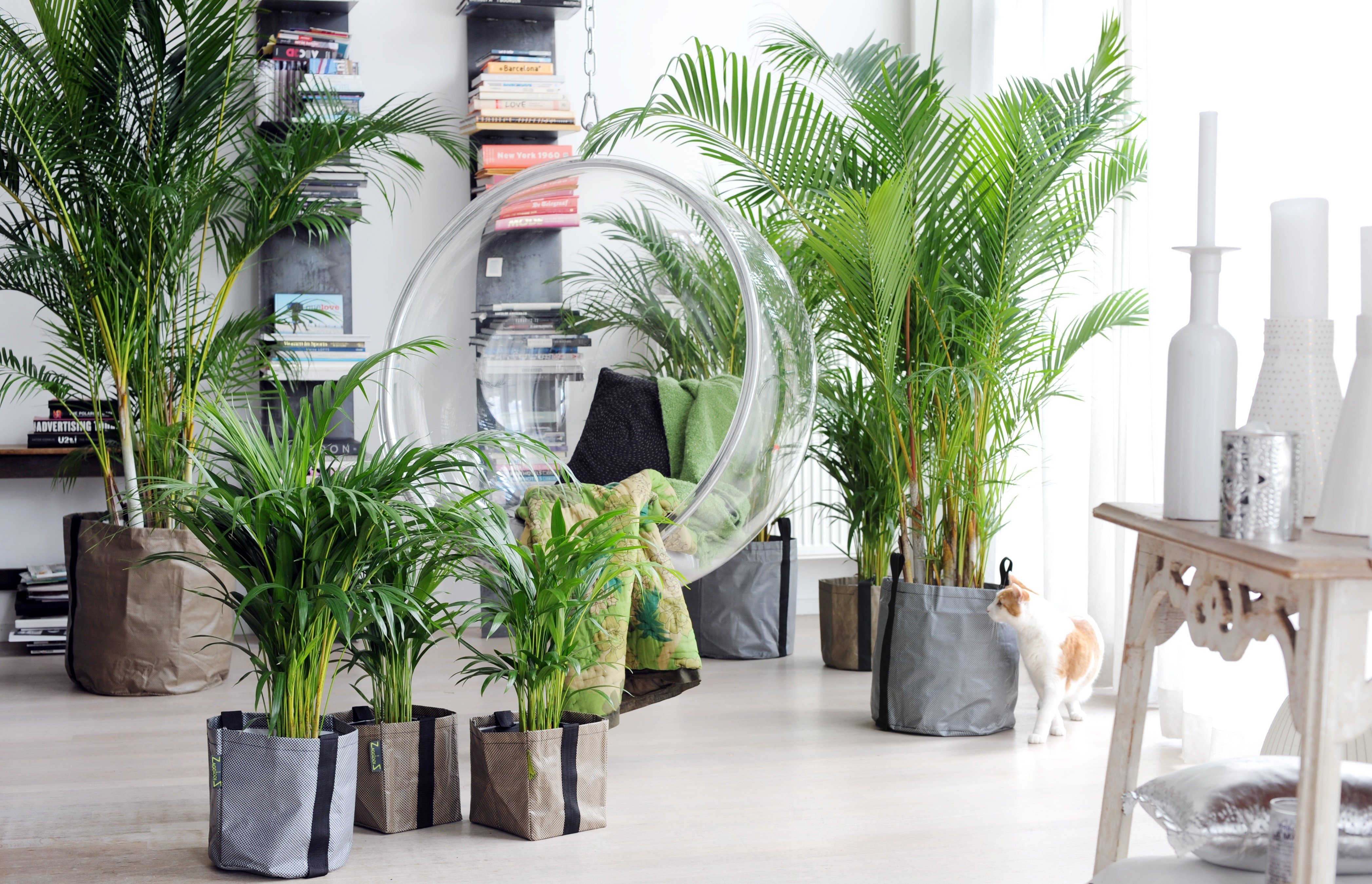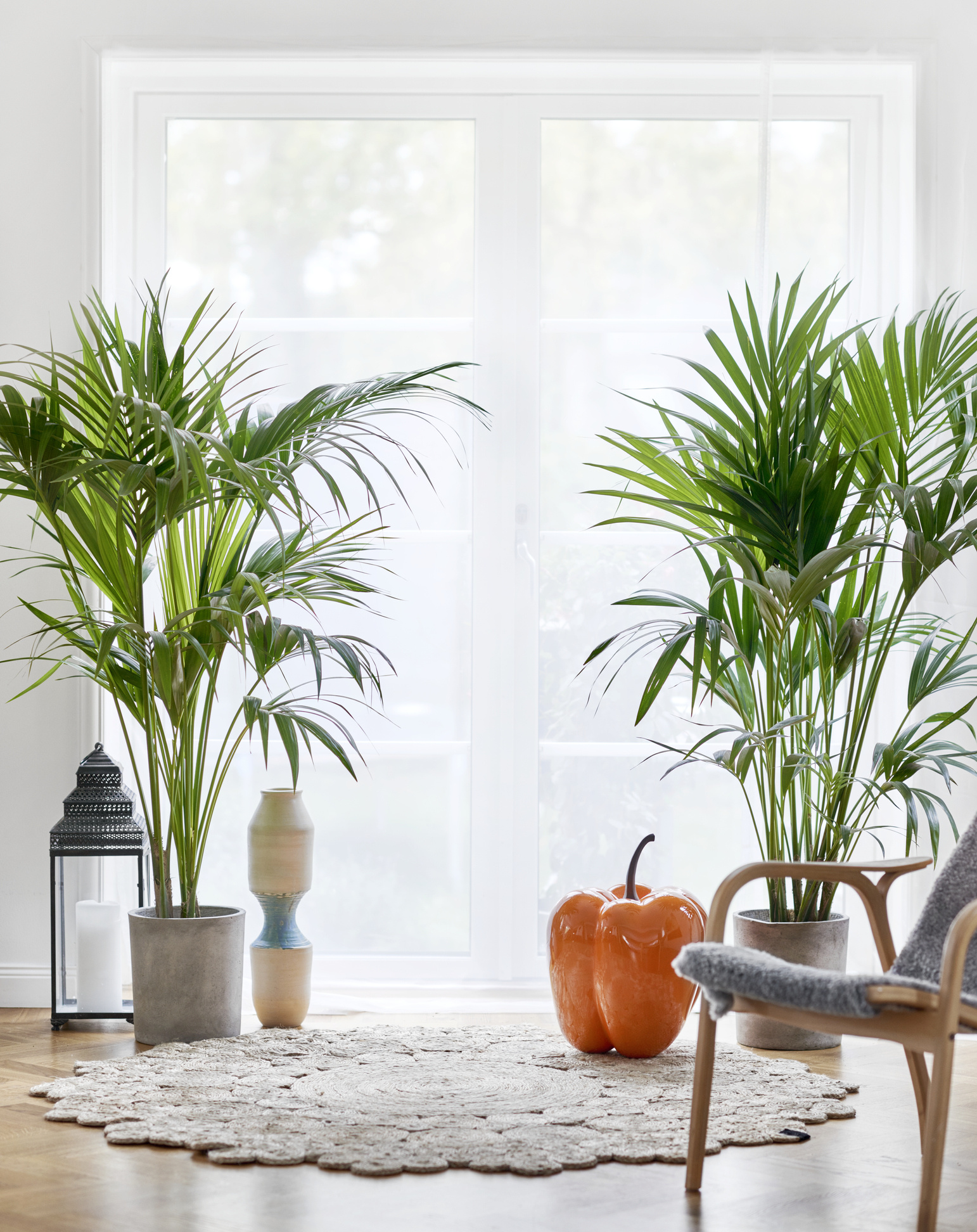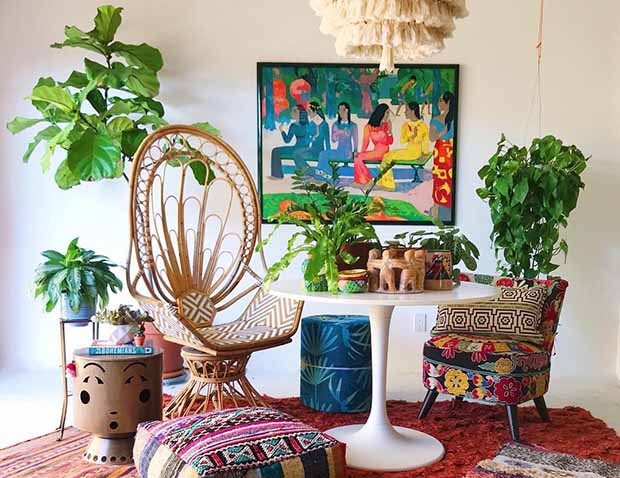Take a closer look at the plants - they are capable of a lot
Today, indoor plants are no longer considered simply as a green background, for which the place is exclusively on the windowsill or on special stands in the corner.
This is a unique decorative tool that allows you to play not only with the atmosphere in the room, but also with space, visual perception, control attention, attract eyes, emphasize the functional purpose of zones and change the internal structure of rooms.
Indoor plants by their very presence are able to compensate for straight lines, combine incompatible design solutions, hide flaws, emphasize advantages, bring harmony even where the basic design principles are violated. And indoor cultures are able to reveal these talents of theirs in the interior of any style. And in hi-tech, minimalism, classics, oriental trends, baroque, nostalgic styles, modern, fusion, loft or Provencal interior, they play an equally important role. After all, gardening of premises offers in many ways as varied options as the use of plants in landscape design.
Plants are individual and unique. And according to the possibilities of use in the interior, each can boast of both advantages and disadvantages. Some plants, such as ferns and ficuses, are ideal as a neutral green background. Others, such as bells, kalanchoe, begonias or calceolaria, are bright accents of color that act as a color spot.
Architectural and austere sansevieria, cheerful bulbous, austere conifers and palms, exquisite orchids, massive hibiscus and camellias, touching Saintpaulias and flexible ivy - all of them can play different roles in the design of a room. And in order to find the key to the ideal use of these plants in the interior, you first need to look at them yourself. And try to discern the character and talent to change the space around you behind the beauty of the details. In fact, all that is needed to reveal the talents of plants is to look at them not only as a living decoration.
 Indoor plants in interior design
Indoor plants in interior design
Modern interior design distinguishes 5 main functions, or roles of indoor plants in the interior:
- Division of space and zoning
- Functional definition, ambiance and emphasis on the purpose of individual zones
- Playing with space
- Masking in all meanings
- Creation of points of attraction of the eye and the role of living bouquets
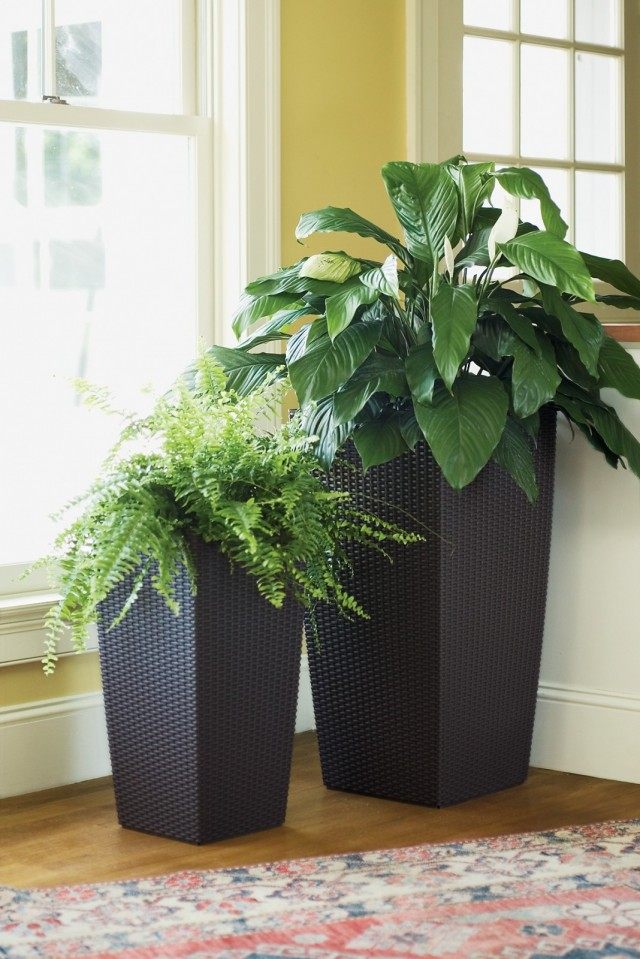 Indoor plants in tall flowerpots
Indoor plants in tall flowerpots
Recommendations
The art of decoration can transform your space. Feel like an artist, don't be afraid to experiment and use original decor.
Spring is a great occasion to place flowering cherry or apple branches in tall vases.
Summer provides an opportunity to enjoy beauty and scents bouquets of roses, lilies, peonies. They can be placed both on the writing table in the study and on the dining room in the dining room.
Giving preference to live colors, it would be good to maintain the color scheme and the general style of the apartment or house.
Several small vases or flowerpots of flowers can make an interesting composition.
If you're creative, you can turn old pots and cans into original plant containers.


Check out a few tips that you may find useful when decorating your home. One beautiful plant can brighten a room and be eye-catching.
But if you add several other types to it, it can lose its attractiveness.
One beautiful plant can brighten a room and be eye-catching all the time. But if you add several other types to it, it can lose its attractiveness.
Small plants should not be placed with a large tree. They will be lost even if they are extraordinarily beautiful. It will be better if you create an ensemble out of them.

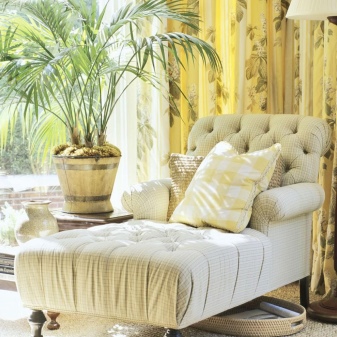

And think over exactly where the plant will be - on the windowsill, shelf, coffee table, dressing table.
There are indoor plants that delight with their long and frequent flowering. These include delicate violets, lush geraniums, large-flowered fuchsias. These representatives of the flora have a lot of varieties, which allows you to choose the color and size that you prefer to see every day in your rooms.
Climbing plants can revive the interior and add coziness: tradescantia, asparagus, chlorophytums. With their help, you can decorate an empty wall or part of furniture, create a shadow on the window, they can braid all kinds of supports.


If you are looking for a twist, look out for yucca, dracaena, and cicas. Looking like palm trees, these compact plants will look original in any setting.
Remember that very large plants are only appropriate in spacious rooms. Lemon, orange, coffee trees, dieffenbachia will create a special mood. Halls, halls, greenhouses, swimming pools are suitable for their placement. They will definitely not decorate a small room, but only create problems and feel uncomfortable.

Nowadays, many are fascinated by the idea of creating a vegetable garden right in the kitchen. People grow spices and herbs in small pots. All this looks very appropriate in the kitchen and is beneficial.

Decorating an apartment with indoor plants
A competent choice, the correct placement of vegetation in the house fills it with comfort and coziness. The main thing is that the premises meet the conditions necessary for the growth and development of the selected species
In addition, it is important to consider the possible effect of flowers on the human body, their benefits or harm to health.
Living room
If this room has enough free space, then placing flowers there will be an excellent solution. The atmosphere of home comfort will help to create climbing plant species, small flowers, ampelous plants. In addition, the living room will be decorated with large specimens resembling a palm tree. Yucca, Dracaena will help to visually expand the boundaries of the living space, bring natural lightness.
 Flowers in the living room
Flowers in the living room
It is advisable to use large pots, racks, racks, pots, original stands
When creating a flower arrangement, it is important to take into account the plants' need for daylight. It is recommended to use flowers of different colors.
Bedroom
This room should be comfortable and safe for the life and health of people. In addition, the creation of a favorable microclimate inside the bedroom is aimed at providing conditions for good rest, relaxation, and recuperation.
It is important to take into account the peculiarities of the process of photosynthesis, which consists in the fact that plants absorb oxygen at night, emitting carbon dioxide. Therefore, the amount of greenery in this room should be limited.
 Fern in the bedroom
Fern in the bedroom
In no case should you place exotic flowers with a strong smell in the bedroom, emitting toxic substances or contributing to the occurrence of allergic reactions. These include Dieffenbachia, Lily, Orchid.
Plants can be placed in different places using floor pots, window sills, bedside tables, walls. An excellent option for a rest room would be Violet, Myrtle, Aloe, Fern, Laurel, Chlorophytum, Geranium.
Kitchen
It is the warmest, most ventilated room with high humidity. Therefore, the kitchen is suitable for many plants for which such conditions are ideal.
Among them, the following floral types can be distinguished:
- light-loving - Orchid, Azalea, Agave, Dracaena, Pelargonium, Cactus, Gloxinia, Monstera;
- thermophilic - Anthurium, Begonia, Coleus, Pelargonium, Dieffenbachia;
- preferring shade - Aglaonema, Gardenia, Clivia, Callisia, Streptocarpus.
 The best plants for the kitchen
The best plants for the kitchen
Plants should be chosen depending on the size of the kitchen area. For example, large kitchens are perfectly decorated with voluminous greenery standing in large pots on the floor.
It is important that kitchen flowers are healthy, tidy and do not exude strong odors.
Cabinet
Everything in this room should tune in to a working mood, facilitate concentration of attention. An important condition for the correct landscaping of the study is the location of green vegetation at eye level. Periodic eye contact with plants reduces fatigue, drowsiness, and eye strain. You can leave Bonsai on the desktop
At the same time, it is important that this place is well lit for at least 3-4 hours a day.
 Flowers for the office
Flowers for the office
To select specific plants, it is important to take into account the internal layout of the room, temperature, humidity and light levels. Ivy, Aucuba, Myrtle, Cissus Antarctic will help to green a cool office with insufficient lighting
You can divide open space into zones with the help of Yucca, Dracaena, Rapis, Ficus. Angaonema, Scindapsus are the most resistant to tobacco smoke species.
Bathroom
Tropical moisture-loving plants that prefer dusk will perfectly fit into the interior of the bathroom. It is advisable to use living greens if there is a window that provides natural light. Otherwise, the flowers will need to be brought out periodically to the light, as well as add additional lamps.
 Plants for the bathroom
Plants for the bathroom
A large bathroom is best decorated with a large exotic plant. In addition, Ficus, Fern, Ivy, Philodendron, Cyclamen, Violet, Chrysanthemum are best suited for the conditions of such premises.
Hallway
It is advisable to decorate a spacious, well-lit hallway with green vegetation. For this, large plants in massive pots that are installed on the floor are perfect. Openwork palms, Yucca, Dracaena, Ficus, Bottle tree are the best choice for such conditions.
With a lack of light, it is recommended to give preference to unpretentious specimens, for which a shadow is enough for life. Among them are Sansevieria, Asplenium Fern, Aspidistru, Bonsai. In any case, they need to be periodically taken out into sunlight.
Plants in the interior of the bedroom
The choice of indoor plants for the bedroom, as well as their number, must be taken seriously. It is not for nothing that trees and flowers call the planet friends.
A unique feature of any plant is that oxygen absorbed during the day, it gives off in the dark.
Excessive amounts of oxygen can adversely affect the presence of diseases such as hypotension and vegetative-vascular dystonia.
- Violets
- Violets
You can decorate the bedroom by placing violets on the windowsill
At the same time, it is very important that direct sunlight does not fall on them.
You can choose a certain variety of violets that match the color of the room design or combine several types, creating a bright composition. The advantage of violets is the absence of a flowering smell.
Another ornamental plant, the buds of which do not have a characteristic odor, is spathiphyllum. Large white flowers are perfect for bedroom decoration, made in light colors.
- Spathiphyllum
- Spathiphyllum
If the area of the room allows, then in one of the corners you can install a single large flower, for example, a monstera.
When choosing a flower arrangement for a bedroom, it is important to remember that the smell of plants should be absent or minimal, since harsh obsessive odors can provoke headaches and insomnia.
What indoor plants can be used in the interior of the bedroom. We turn to the help of Feng Shui
Eastern science says that the choice of colors for the sleeping area is quite limited. When choosing greenery to decorate a room, you need to consider three rules:
- It is not recommended to put more than two flower pots in the bedroom;
- Do not mix the living and the dead in the room in which you sleep, that is, living and artificial plants, herbaria, dried bouquets, ikebans;
- If there is a bouquet of fresh flowers in the headboard area. As soon as the first signs of wilting appear, it is necessary to get rid of it - this can negatively affect the general well-being.
Orchids in the bedroom should be discarded. Their obsessive smell will provoke dizziness, headache, and sleep will be superficial and will not bring a feeling of vigor. The individual characteristics of the organism are important here.

Scientists recommend paying attention to plants that are beneficial to health. Chlorophytum cleans the air from pathogenic bacteria
Chlorophytum cleans the air from pathogenic bacteria.
Geranium has a beneficial effect on female hormonal levels.
Begonia will relieve emotional stress and irritability.
You can put a pike tail on the windowsill, which will hold back not only dust, but also negative energy.
- "Mother-in-law's language"
- Chlorophytum
- Geranium
You can put "mother-in-law's tongue" in the bedroom. This plant produces oxygen at night. If there is a lack of fresh air in the bedroom, this plant will help you wake up refreshed and rested.
How to care for a fern at home?
Lighting and temperature control
 Indoor ferns need a well-lit place that is protected from direct sunlight. Many growers mistakenly believe that these plants are shade-tolerant. However, in the shade, the shrub will stop growing and may even die. Therefore, in order for the leaves to remain large and healthy, diffused but bright light is needed. It is best to place or hang the fern pot near the southwest window.
Indoor ferns need a well-lit place that is protected from direct sunlight. Many growers mistakenly believe that these plants are shade-tolerant. However, in the shade, the shrub will stop growing and may even die. Therefore, in order for the leaves to remain large and healthy, diffused but bright light is needed. It is best to place or hang the fern pot near the southwest window.
Shrubs feel good in rooms with an air temperature of + 15- + 22 degrees. However, some types of ferns belong to certain groups, for which specific conditions must be created:
- For the pimpled polypodium and pellea, the air temperature in winter should be about +12 degrees.
- Asplenium, platycerium, nephrolepis and maidenhair are thermophilic plants, so the air temperature during their cultivation should not fall below +18 degrees.
Watering and humidity
 When caring for ferns at home, a certain watering regime is required. The plant needs a lot of water. Watering it is required regularly, as soon as the topsoil dries up a little. The optimal watering regime depends on the room temperature. In the hot season, the plant is watered several times a week.
When caring for ferns at home, a certain watering regime is required. The plant needs a lot of water. Watering it is required regularly, as soon as the topsoil dries up a little. The optimal watering regime depends on the room temperature. In the hot season, the plant is watered several times a week.
Excess moisture for plant roots is also harmful. That is why ferns are planted in well-drained soil so that excess moisture can immediately drain off. For watering shrubs, it is recommended to use soft water at room temperature. It is desirable that it be boiled or settled for several days.
Ferns are very fond of high humidity. They respond well to daily spraying. In hot weather and in rooms with batteries turned on, the plant must be sprayed several times a day or use a special air humidifier. It is also recommended that shrubs take a shower periodically.
Ferns




Top dressing
If, during active growth, the plant does not receive the necessary nutrients, the color of its leaves will first become very pale, then they will begin to turn yellow and dry out. Therefore, once a week at home, shrubs should be fed with special complex liquid fertilizers.
Fern transplant
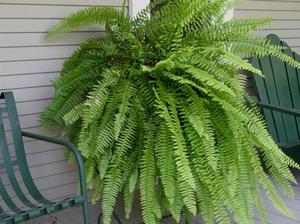 Indoor fern care includes transplanting young plants annually. Mature plants are transplanted only after the roots have completely filled the pot.
Indoor fern care includes transplanting young plants annually. Mature plants are transplanted only after the roots have completely filled the pot.
The difficulty lies in the fact that the shrubs tolerate the transplant procedure painfully and can recover after it within several months. Therefore, it is recommended to use the transshipment method, replanting the plant from one pot to another without removing the soil from the roots.
The best time for transplanting is spring. For the fern, you need to pick up a wide, low flowerpot and soil with an acidity level of 5.0 to 6.6 pH. For self-preparation of the earthen mixture, you will need to mix:
- peat - 1 part;
- humus - 1 part;
- leafy ground - 1 part;
- bone meal - 1/5 part.
At the bottom of the pot, which should be 5 cm larger than the previous one, drainage is poured first, then moss spreads, and the substrate is poured. The plant is planted, and its roots are covered with an earthen mixture so that no voids remain between them.
Immediately after planting and for another two weeks, the plant needs abundant watering.
Indoor flowers in the bathroom
Flora is installed in the bathroom, which loves high humidity, twilight and warmth. If there is no window in the bathroom, then it is recommended to install a phytolamp.
Flowers in the bathroom create a cozy, unusual atmosphere, but at the same time they can form a number of inconveniences. In a small bathroom, flowers can be placed on shelves or in hanging flowerpots. This placement option does not clutter up the space, fills empty spaces, and the flowers do not interfere. In large bathrooms, tree flowers and not lush plants will be appropriate. The flora placed in the bathroom must be treated very carefully. Flowers should not be placed on a bathtub, washing machine, sink, or near a shower stall.
Beautiful bouquet in the interior of the room
Flowers in the interior of the room
Flowerpot in the interior
A chic assortment of indoor plants provides an opportunity to beautifully decorate any room. Each view reveals itself in a completely different way depending on the background, incident light, adjacent colors and the overall interior. The main advice is to fantasize, because first of all you should like the flowers in the interior of the apartment. If you do not know where to install the container, then you can experiment with its location, and the most suitable place will be found by itself.
Tips for using plants to create different interior styles
Islets of life of plant origin have become a popular feature in the design of houses and apartments. A modern person subconsciously strives for unity with nature, therefore he tries to bring natural notes into interiors of various styles. This direction in design was named "New Botany".
A large plant with large leaves in a massive pot accentuates the creative mess of industrial Loft-style textures. Lush greenery inside the confined space of pipes, glass flasks, cans enriches the urban interior.
 Compositions for various styles
Compositions for various styles
Vertical, horizontal flower beds with built-in irrigation system organically fit into the technological style of Hi-tech. Vintage ceiling plants that grow from top to bottom amaze the average person, but reflect the high-tech worldview.
The strict graphics of forms, decorative plant leaves fit perfectly into the artificial Art Deco interior, which combines the sophistication of antiquity with various architectural styles.
Racks, shelves of various configurations, pots are perfect not only for the rustic Country style, but also for Provence. In this case, preference is given to roses, violets, geraniums, hyacinths, crocuses. In addition, you can create miniature lawns using various grasses, lavender.An abundance of shelves, bookcases, painted pots are the hallmarks of this French style.
 Provence style room
Provence style room
Planters made of different materials, stones, sand, trees are included in the composition of Japanese mini-gardens. Indoor cypresses, ivy, roses, oleander will perfectly complement the Mediterranean interior. In the Scandinavian version, the plant should be the center of attention. Here, for the first time, lawns on the walls began to be used, hanging gardens of moss, cereals, stems, leaves, and ampelous plants framed in a picture. Upside down pots with stems growing down are an extravagant example of this style.













